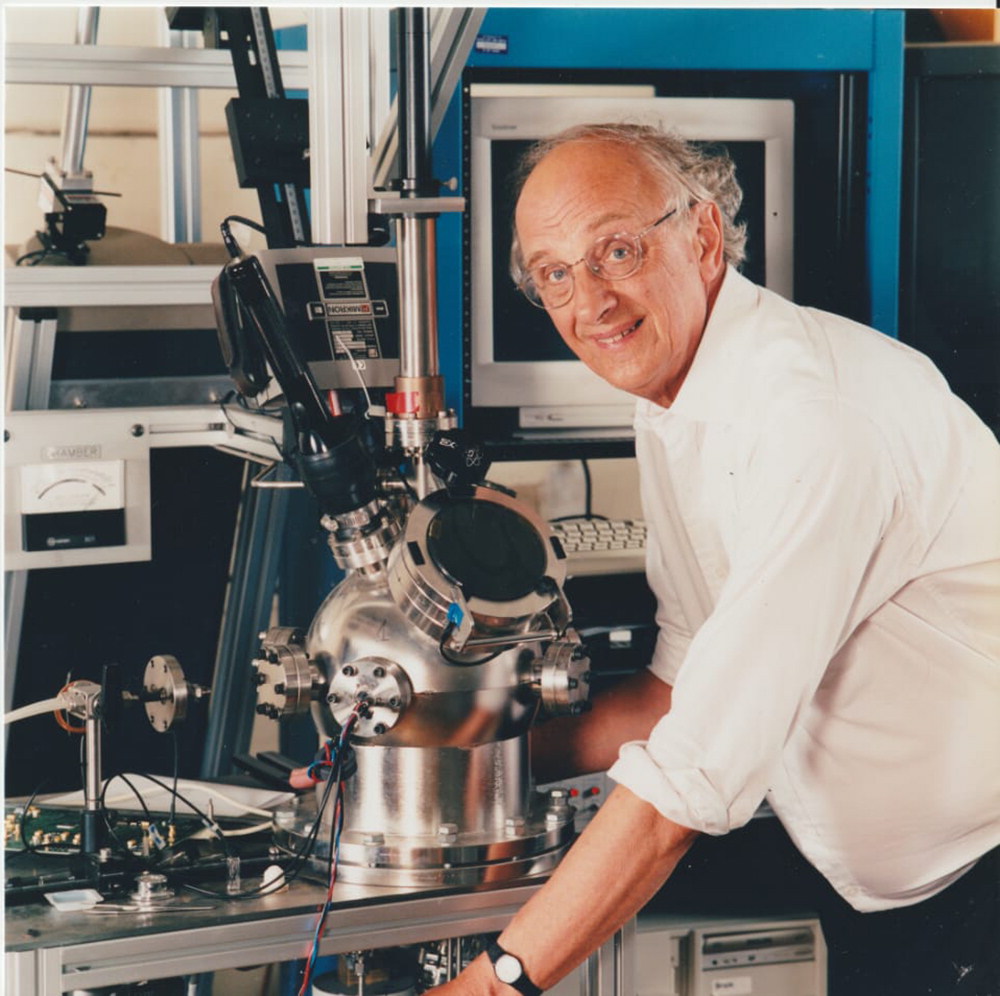The death of John Enderby on August 3, 2021 saw the loss to neutron science of one of its leading protagonists. John, working mainly on studies of the liquid state, pioneered several innovative techniques.
John carried out national service in Egypt from 1949 to 1951 and said that working in the RAF telecommunications center “convinced me of the importance of physics and mathematics.” He took evening classes as a part-time physics student at Birkbeck College London, where he earned a first-class honors degree in 1957. John stayed at Birkbeck for his PhD, supervised by Norman Cusack; his research was concerned with the electrical properties of liquid metals.

John lectured in Huddersfield and then Sheffield, before obtaining a chair at Leicester, and then moved to Bristol in 1976. There he served as Head of Department from 1981 until 1994.
He began his neutron work after meeting Peter Egelstaff at AERE Harwell. Peter, at that time a major driving force for neutron scattering studies of condensed matter, would claim “neutrons tell the truth about condensed matter systems.”
In 1966 John with Egelstaff and David North, a research student, introduced the technique of neutron scattering with isotopic substitution which advanced fundamental understanding of the structure of multicomponent liquids. John’s insight and drive to exploit this technique, using newly developed sources, proved enormously productive in elucidating the structure of binary liquid mixtures.
Early work, carried out in Leicester with Alan Howe and Frank Edwards, determined the radial distribution functions of the molten salt sodium chloride. These results provided an experimental benchmark for the development of theories and models of molten salts. Bob Newport continued this work, followed soon by the experiments of Spencer Howells aimed at determining ion-ion correlations in aqueous electrolyte solutions, testing the celebrated Debye-Hueckel theory. These early investigations led John and colleagues to pioneer research into how water molecules are ordered around ions in aqueous solutions- a major step forward in chemical physics. Experiments were carried out by Alan Soper and one of us (GWN). Spencer and Alan went on to build the diffractometers LAD, SANDALS and NIMROD on the ISIS neutron source for structural studies of liquids and glasses.
On moving to Bristol, John expanded his research and with the able assistance of several research students, including Nick Hewish, Philip Salmon and Adrian Barnes, made major contributions to the understanding of complex liquids, e.g., insight into the metal/insulator transition in chalcogenides and monitoring the exchange rate of water molecules around ions in solution.
John was not only inspirational for his coworkers. He vigorously encouraged others to employ neutron isotopic substitution. John Finney and Jacky Turner were early converts; they used these methods on the biologically significant urea/water solution.
During summer months, John often took his family to Argonne National Lab. There he collaborated with David Long Price and Marie-Louise Saboungi in studies of liquid semiconductors and glasses, using a variety of neutron scattering techniques.
John was an exceptional manager/administrator. From a neutron viewpoint, he was part of the team responsible for the construction of ISIS at RAL and was an Adjunct-Director at ILL from 1985–1988.
John’s distinction was recognized by many awards. He was elected Fellow of the Royal Society in 1985, and later served as its Physical Secretary. He received a knighthood for services to science and technology in 2004. John was President of the Institute of Physics (2004–2006), received that Institute’s Guthrie Medal, and was awarded several honorary degrees.
Those of us who knew John personally will miss his zest for science, his wise advice, his font of anecdotes, and his distinctive laugh accompanying these. He was fond of telling us: “Bullshit baffles brains,” from his RAF days. Once, while attending a particularly dense theoretical talk, John was heard to mutter: “The only field theory I know is ‘Please shut the gate’.”
John was a brilliant communicator and motivator who inspired many with their careers in neutron scattering. His publications will remain as testimony to his scholarship and reflect his excellence as a scientist.
Our thoughts are with John’s wife Susan, his children (Penny, Emma, Rebecca and Tom) and his grandchildren and great grandchildren.
H.H. Wills Physics Laboratory, University of Bristol, Bristol, UK
Robert Evans
H.H. Wills Physics Laboratory, University of Bristol, Bristol, UK
